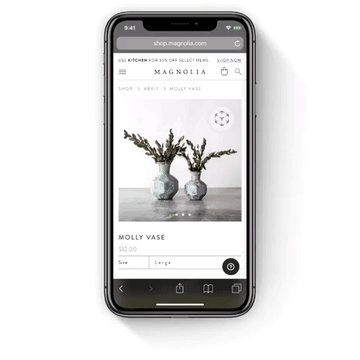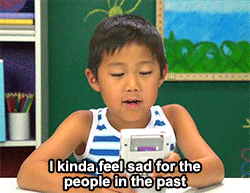Browser-based AR, or WebAR, is augmented reality that can be experienced from your device's browser, straight from your smartphone, tablet, or computer. Why is this such a big deal?
Because while WebAR means no applications – it also means a more seamless experience for consumers. Augmented reality available from every smartphone browser without app installs - count me in!
What is WebAR?
WebAR is an emerging web technology that uses our mobile browsers to provide an augmented reality experience. As the name suggests, WebAR is based on the same underlying technologies that websites use, which means WebAR allows for creating AR experiences that are just as easy to display to customers as websites or web apps.
In practice, you open a link and launch your phone's camera (with your permission, of course), and your browser becomes an AR scanner, or the browser overlays the AR content immediately as it would through an AR app.

WebAR removes friction
Up until now, to experience any AR content, users needed to download and install an application to their mobile devices, which is an extra step the user will joyously skip if the time is not right.
Arilyn has always provided a free app for its users, but having to download and install a separate app has always been one unneeded step in creating campaigns for users to experience at a moment's notice.
The sheer simplicity of webAR makes it a huge turning point in the evolution and spread of AR.
WebAR gives AR creators a level playing field, where your brand does not need to be dependent on developing a separate app to deliver an immersive experience to your customers. Availability – one of the biggest hurdles, and the reason why the consumer AR market has not developed at previously predicted speed – has now been eradicated.
WebAR – The good part
The possibilities of sharing AR content are vastly improved, as you can share the link to WebAR content just like any other link over multiple marketing channels: on social media posts, display advertising, email, messaging, and so on.
WebAR is already awfully close to possessing the features of an app. So close in fact, that with a proper design you can create very similar results with your campaign, as you would by using a traditional app-based approach.
WebAR – The less good parts
Although our appraisal of the upcoming AR revolution might give you the feeling of the sky being the limit, we have to remember that WebAR is still in its early days.
There are many improvements and development cycles on the way, but there are also few restrictions at the moment which need to be taken into account.
- A lack of real-world scaling of 3D objects in WebAR, but fortunately there are workarounds, and we believe this will be addressed very shortly.
- ARKit and ARCore, Apple's and Android's respective augmented reality frameworks with their full access to smartphone sensors are still not fully supported with WebAR.
- High-resolution content and complex animations have to be used sparingly, as the browser will take some of the computing power and bandwidth.
These are currently the most significant hurdles we need to address when creating WebAR. The list is not long, and WebAR being at the very beginning of its journey, these limitations will not be around forever.

Cool things coming up!
One day we might not need AR apps at all (AR glasses anyone?), but until then, We Arilyners and other AR champs continue to develop our mobile apps. There are a lot of cool things you still just cannot do with a browser-based AR.
We at Arilyn are hard at work to bring you the latest and greatest possibilities, so stay tuned for more news on WebAR development! Our developers have already achieved things before deemed impossible with WebAR. (They are amazing, we know).
In the meanwhile, the Arilyn app is free and easy to download, so you're saving a ton of money compared to developing your own. As our analytics show, using an app is not an obstacle to getting great results with your AR campaign. Mostly, WebAR is giving our customers a welcomed choice.
WebAR is an excellent solution for lighter AR campaigns where customers are supposed to act at a moment's notice.
Read more about what is augmented reality.


